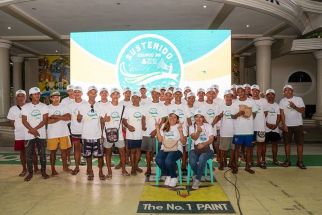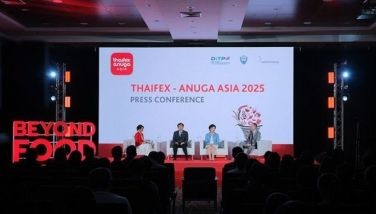The blue dragon

JAKARTA – The Indians are buying an amphibious search-and-rescue aircraft capable of short take-off and landing (STOL). The Australians, meanwhile, are in negotiations for the acquisition of a new fleet of diesel-powered attack submarines that are said to be the most quiet in the world.
Both nations are discussing the military procurements with manufacturers in the same country: Japan.
If the deals push through, they will constitute Japan’s largest sale of defense hardware since it resolved not to supply weapons of war to other countries following its surrender in 1945. The policy was reinforced in 1967 when it banned exports of military equipment.
The recent moves have triggered intense debates in the only nation that has suffered atomic bombing and which has a unique pacifist constitution. While the lifting of the export ban is good news for Japan’s defense industry, surveys show strong public opposition to the move. But Prime Minister Shinzo Abe seems determined to push ahead with his policies even if these cost him his job.
Japan under Abe has been veering away from its pacifist self-defense posture as another economic and military power rises in its neighborhood. China’s avowed “peaceful rise” has been threatening the peace in its own backyard and is compelling its neighbors to review defense policies. The Philippines is not the only country that is being pushed closer to the United States and other nations with strong armed forces such as Japan, Australia and India.
Japan’s perceived militarization under Abe is rattling some of its neighbors where memories of the country’s World War II atrocities remain fresh. But in the Philippines, any similar sentiments are overwhelmed by concerns over Beijing’s massive reclamation activities in the South China Sea.
The memories are sure to be dredged up again as Japan prepares to mark the 70th anniversary of the end of World War II on Sept. 2. There are debates on whether Abe would say sorry for Japan’s wartime aggression, which certain countries particularly China and South Korea cannot forget.
In the Philippines, only a few are left of the generation that fought in the war, while those who were old enough to remember the suffering but too young to fight seem to have reconciled with the former occupiers. Hiroshima and Nagasaki, and Japan’s post-war conduct on the international stage have helped speed up the healing.
Meanwhile, younger generations of Filipinos associate Japan mostly with benign things: cars, electronic appliances, sushi, manga comics and Hello Kitty. It also helps that the Japan-led Asian Development Bank is based in Manila and Japan is one of the largest sources of official development assistance for the Philippines.
The impassioned opposition in Japan to Abe’s militaristic bent is in fact serving to reassure some of those who support his country’s greater security role in the region that when Tokyo again projects military power, a vigilant Japanese public will see to it that this is done responsibly.
* * *
Current conflicts in the region were among the topics discussed at the launch of the Japan-ASEAN Media Forum, organized by the Japan Foundation Asia Center, which I attended in this Indonesian capital. The participants – senior journalists and academics from several Southeast Asian countries as well as China, India and Japan – met with Indonesia’s Vice President Jusuf Kalla at the end of our two-day forum last Monday.
Unlike most vice presidents who are largely spare tires, Kalla works closely with President Joko Widodo, taking on the role of an executive secretary, and more. Kalla also has the singular distinction of serving two presidents consecutively.
Asked by a Japanese journalist if Indonesia welcomed a greater military role for Japan, Kalla replied, “If you want peace, you prepare for war.”
He said a balance of power would be good for the region: “Only balance of power can make better security for ASEAN.”
Does Jakarta support the Philippines’ arbitration case before a United Nations tribunal?
“Peaceful solution is much better than war,” he said in reply to my question. “Indonesia of course supports the way of the Philippines in the solution of this case.”
The Philippine government turned to the UN arbitral tribunal after ASEAN resisted turning the dispute into a regional issue. The country is also reaching out to Australia, India and Japan for greater security cooperation in ensuring freedom of navigation in disputed waters.
* * *
Japan and India are also strengthening their defense cooperation amid the Chinese reclamation activities. New Delhi is interested in buying up to 15 of the US-2 amphibious STOL aircraft from Japan’s ShinMaywa Industries. The US-2 is used by the Japan Maritime Self-Defense Force for surveillance and emergency medical transport and rescue missions in the country’s exclusive economic zones. It can fly up to 6,000 meters, land on waves as high as three meters and operate at very low-speed.
Meanwhile, the Aussies reportedly want to replace their Collins-class submarines with the larger Soryu. Like other Japanese naval vessels, the Soryu is named after a mythical creature, in this case a blue dragon. The submarine is equipped with torpedoes and anti-ship missiles, but in keeping with Japan’s anti-nuclear stance, the vessel runs on diesel-electric power. The Soryu can stay submerged for up to two weeks without resurfacing – longer than other subs.
Australia developed its Collins-class subs together with Swedish builder Kockums, but the vessels’ performance has reportedly disappointed the Aussies.
Japan has been a leading submarine maker since the war. Interestingly, an Indian nationalist who advocated armed revolution against the British Empire when Mahatma Gandhi was leading a non-violent independence struggle received Japanese and German assistance during the war, using submarines.
Subhas Chandra Bose met once with Adolf Hitler in 1943, but the fuehrer already had his hands full in the European theater and suggested that the Indian turn to the Japanese for help. So Bose was brought out of Europe in a German U-boat, past South Africa’s Cape of Good Hope and then to Madagascar in the Indian Ocean, where he transferred to a Japanese I-29 submarine that some say stopped over in Japanese-occupied Sumatra in Indonesia before proceeding to Japan.
Bose’s aspirations may have been noble, but he chose the wrong wartime allies, and Gandhi’s non-violent legacy eclipsed all other movements for Indian independence. But Bose’s story shows that military cooperation between India and Japan is not new.
That cooperation can contribute to balancing power in our troubled region.
- Latest
- Trending




























